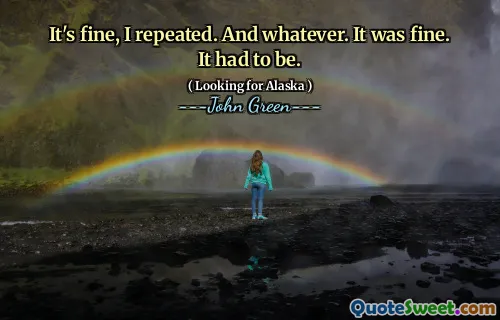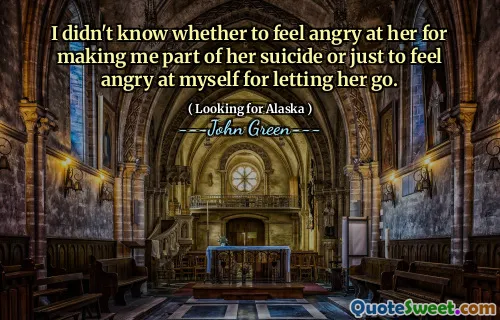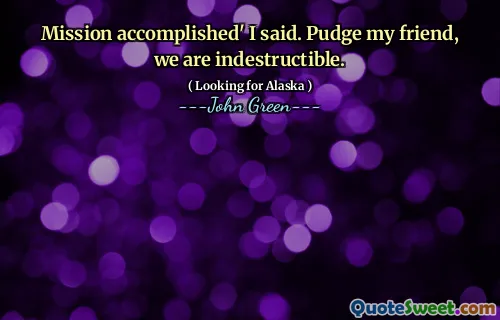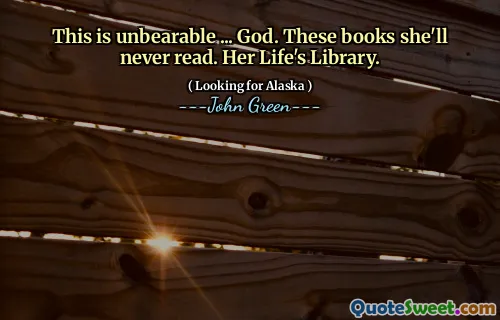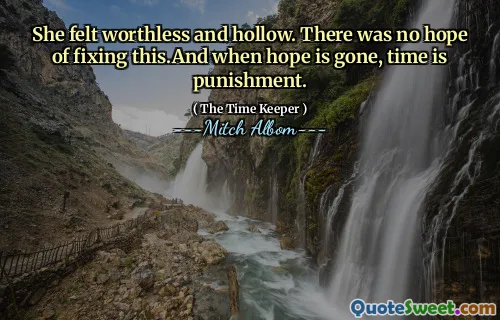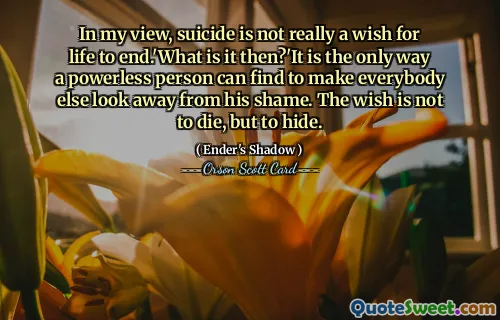
I didn't know whether to feel angry at her for making me part of her suicide or just to feel angry at myself for letting her go.
This quote delves into the complex emotions encountered in the aftermath of a loved one's tragic decision to end their life. The speaker grapples with a profound sense of guilt and confusion, torn between anger directed at the person who chose to take their own life and anger directed inward for not preventing it. The internal conflict highlights the deep struggle to assign responsibility and process grief, many of which are common in mourning stages that involve guilt and regret.
The phrasing captures the often paradoxical feelings survivors experience—wishing to blame the deceased for their suffering, yet also blaming oneself for perceived failings or missed signs. This ambivalence is a psychological defense mechanism that both validates the pain and complicates healing. It points to the difficult reality that grief is rarely linear; emotions can fluctuate between anger, guilt, sadness, and confusion.
The quote also touches on themes of vulnerability and helplessness. The awareness that, despite one's love and concern, they could not prevent the tragedy, often leads individuals to carry a burden of responsibility, questioning their actions and decisions. It speaks to the human tendency to search for reasons and culpability in the face of traumatic loss, often battling feelings of helplessness and remorse.
Such reflections are important because they acknowledge the raw, unfiltered reality of dealing with unexpected loss. Recognizing that these feelings are part of the healing process can assist individuals in navigating their grief, eventually leading to acceptance and understanding. Ultimately, this quote encapsulates the struggle to reconcile love, guilt, and pain, a universal aspect of profound mourning experiences.
---John Green---

